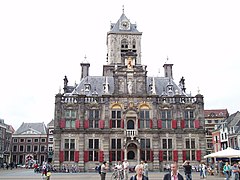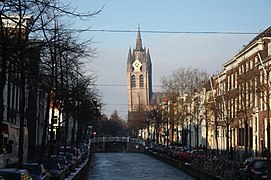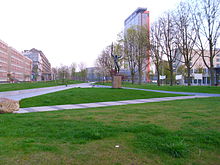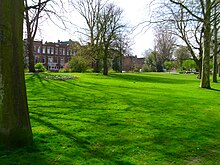Delft | |
|---|---|
City and municipality | |
 A view of Delft with the Oude Kerk in the centre | |
| Nickname: Prinsenstad (Prince City) | |
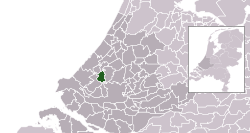 Location in South Holland | |
| Coordinates: 52°0′42″N4°21′33″E / 52.01167°N 4.35917°E | |
| Country | Netherlands |
| Province | South Holland |
| City Hall | Delft City Hall |
| Government | |
| • Body | Municipal council |
| • Mayor | Marja van Bijsterveldt (CDA) |
| Area | |
• Total | 24.06 km2 (9.29 sq mi) |
| • Land | 22.65 km2 (8.75 sq mi) |
| • Water | 1.41 km2 (0.54 sq mi) |
| Elevation | 0 m (0 ft) |
| Population (January 2021) [4] | |
• Total | 103,581 |
| • Density | 4,573/km2 (11,840/sq mi) |
| Demonyms |
|
| Time zone | UTC+1 (CET) |
| • Summer (DST) | UTC+2 (CEST) |
| Postcodes | 2600–2629 |
| Area code | 015 |
| Website | www |

Delft (Dutch pronunciation: [ˈdɛl(ə)ft] ⓘ ) is a city and municipality in the province of South Holland, Netherlands. It is located between Rotterdam, to the southeast, and The Hague, to the northwest. Together with them, it is a part of both the Rotterdam–The Hague metropolitan area and the Randstad.
Contents
- History
- Early history
- Explosion
- Sights
- Culture
- Education
- Economy
- Nature and recreation
- Notable people
- Dutch Golden Age
- Public thinking and service
- Science and business
- Art
- Sport
- Miscellaneous
- International relations
- Twin towns
- Transport
- See also
- Gallery
- Notes
- References
- Further reading
- External links
Delft is a popular tourist destination in the Netherlands, famous for its historical connections with the reigning House of Orange-Nassau, for its blue pottery, for being home to the painter Jan Vermeer, and for hosting Delft University of Technology (TU Delft). Historically, Delft played a highly influential role in the Dutch Golden Age. [5] [6] [7] [8] In terms of science and technology, thanks to the pioneering contributions of Antonie van Leeuwenhoek [9] [10] and Martinus Beijerinck, [11] Delft can be considered to be the birthplace of microbiology.










